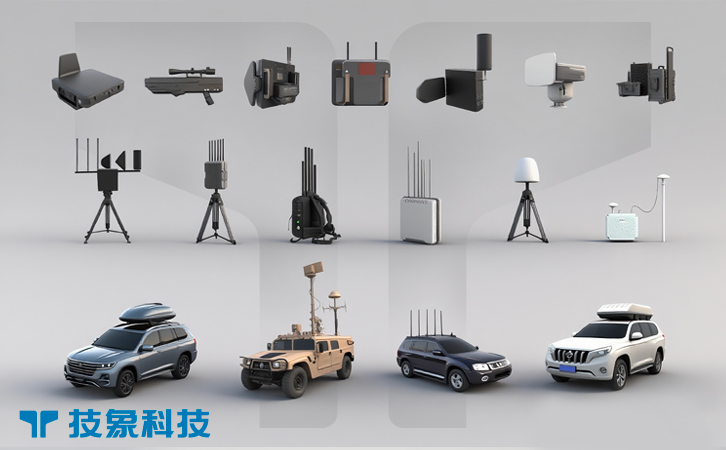Yes, specialized guns designed specifically to disable drones exist and are actively deployed worldwide. These are distinct from conventional firearms, using electronic warfare, directed energy, or physical interception methods instead of bullets. Below is a comprehensive analysis of their technology, capabilities, and limitations:
1. Electronic Countermeasure (ECM) Anti-Drone Rifles

These handheld devices dominate the market, using radio-frequency (RF) jamming and GNSS disruption to disable drones non-kinetically:
Mechanism: Emit directional RF signals (2.4 GHz, 5.8 GHz, GPS/GLONASS/BeiDou bands) to sever drone-operator communication or spoof navigation. This forces drones to land, return to base, or hover helplessly .
Range: Typically 500m–3km, depending on model (e.g., Turkey’s Harp ES-60 achieves 3km ).
Examples:
DroneGun Tactical/Mk4 (DroneShield, Australia): Jams control/GPS across multiple bands; 2km range .
SkyWiper EDM4S (Lithuania): Portable rifle disrupting drones up to 2.5km .
KVS G-6+ (Ukraine): Combines jamming with electro-optical tracking .
Advantages:
Non-destructive; avoids debris/collateral damage .
Lightweight (2.5–6kg), battery-powered (60–90 mins operation) .
“Point-and-shoot” usability for military/law enforcement .
Limitations: Less effective against autonomous drones using fiber-optic control or AI navigation .
2. Kinetic Anti-Drone Guns
For scenarios requiring physical neutralization:
Net Projectile Systems: Fires nets to entangle propellers (e.g., SkyWall). Captures drones intact but limited to short ranges .
Electromagnetic Pulse (EMP) Guns: Emit bursts to fry drone electronics (e.g., experimental military systems). Risks collateral damage to nearby electronics .
3. Directed-Energy Anti-Drone Weapons
Though often mounted, portable laser/microwave “guns” are emerging:
Laser Systems:
DragonFire (UK): 2024-tested laser disabling drones via structural burning; low operational cost per shot .
CAEP Laser Gun (China): Claims 30+ drone kills in tests by burning critical components .
High-Power Microwaves (HPM):
THOR HPM (U.S.): Microwave bursts to disable drone swarms .
4. Critical Considerations
Legality: Restricted to military/authorized personnel in most countries due to spectrum interference risks .
Effectiveness Gaps: Jamming fails against pre-programmed autonomous drones; kinetic/energy weapons fill this niche but increase collateral risks .
Operational Context:
Military: Used in Ukraine/Russia conflicts against FPV and surveillance drones .
Civilian: Deployed at airports (e.g., post-2018 Gatwick incident) and critical infrastructure .
5. Leading Manufacturers & Deployment (2025)
| System | Type | Range | Key Features |
|---|---|---|---|
| DroneGun Mk4 (DroneShield) | RF Jammer | 2 km | Multi-band jamming, IP-rated ruggedness |
| Harp ES-60 (Turkey) | Electromagnetic | 3 km | Foldable stock, 22mm rail compatibility |
| Battelle DroneDefender (US) | RF Jammer | 400 m | 5-hour battery, 0.1s activation |
| THOR HPM (US) | Microwave | Classified | Counter-swarm capability |
6. Future Challenges
- Autonomy Adaptation: Next-gen drones using AI/ML navigation require hybrid countermeasures .
- Regulation: FCC/ITU restrictions on RF jamming limit civilian adoption .
- Portability vs. Power: Energy weapons struggle with size/battery constraints for handheld use .
Conclusion
Anti-drone guns are established tools in modern security, with ECM rifles dominating for non-lethal neutralization. While kinetic and energy-based variants exist, RF jammers remain the most practical “gun-like” solution for disabling consumer/tactical drones. Ongoing R&D focuses on countering autonomous threats and improving portability. For authoritative technical specifications, consult manufacturers like DroneShield, XBOOM, or Harp Arge .



